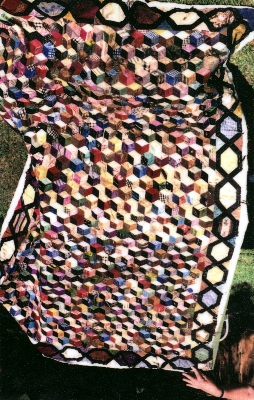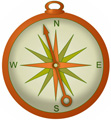Quilt No.217MSR - Upper Murray Historical Society

.
1829 x 1220mm
Made by Miss Harriet Dixie in Treventy, Wales c. 1820. Later owned by Miss Winifred Waters, daughter of Harriet's eldest son Thomas Beaumont and Alice Wheeler, and then by the Waters family. Donated to The Man from Snowy River Museum, Upper Murray Historical Society, Corryong (Vic) in 1980.
Harriet Dixie made the quilt in Treventy, Wales, c. 1820. In 1831 she married John Waters, and had four sons, Thomas Beaumont, Alexander Dixie, Edward and John. After John Waters died Harriet remarried. The children, not liking their stepfather migrated, Thomas to Australia, and later Alexander followed. Edward and John (who became a doctor), went to Canada.
Thomas Beaumont, on migrating, settled in the Upper Murray. He married Alice Wheeler in 1863 and they lived at Gravel Plains. Amongst their children were Rose and Winifred, who later owned the quilt, and a son, Charlie.
There are two stories as to how the quilt came to Australia:
1. The quilt was sent to Australia in 1856 on the death of its maker, Harriet, and it then remained in the Waters Family until donated to the Upper Murray Historical Society's museum.
2. The quilt was sent out to the young couple, Thomas Beaumont Waters and Alice Wheeler, on their marriage in 1863. Their granddaughter gave it to the museum.
[From notes supplied by a member of the Upper Murray Historical Society 2.12.97]
Related Quilts:
1700 x 1200mm
2083 x 1626mm
2200 x 2000mm
1960 x 800mm
1860 x 1550mm.
2300 x 1840mm






